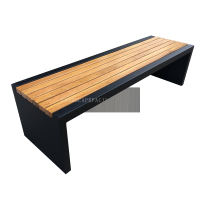Welcome to the website for landscape facilities products and knowledge.
What is the table’s compatibility with outdoor heating or cooling devices?
When creating the perfect outdoor living space, understanding your table's compatibility with climate control devices becomes crucial for year-round enjoyment. Modern outdoor tables demonstrate remarkable versatility in accommodating various heating and cooling solutions, though specific considerations must guide your selection process.
For heating compatibility, tables constructed from heat-resistant materials like powder-coated aluminum, tempered glass, or natural stone offer the safest pairing options with patio heaters. These materials withstand radiant heat without compromising structural integrity or surface quality. The positioning between your table and heating unit requires careful planning—maintain a minimum clearance of 24-36 inches to prevent heat damage while ensuring optimal warmth distribution. For integrated table systems with built-in heaters, verify that the construction includes proper insulation and heat-shielding technology.
Cooling device compatibility presents different challenges. Tables used with outdoor misting systems or portable air coolers should feature water-resistant properties and quick-drying surfaces. Powder-coated metal, synthetic wicker, and teak wood tables handle moisture exposure exceptionally well without warping or corrosion. When incorporating cooling elements, ensure your table's surface provides adequate stability for device placement while allowing proper airflow circulation.
Material durability represents the cornerstone of successful integration. High-quality outdoor tables undergo rigorous testing for UV resistance, moisture protection, and thermal stability. Before purchasing climate control devices, examine your table's manufacturer specifications regarding temperature thresholds and weather exposure limits. Tables with certification for all-weather use typically offer the broadest compatibility spectrum.
Safety considerations cannot be overstated. Verify that electrical outlets for powered cooling devices maintain safe distance from table edges to prevent tripping hazards. For propane-powered heaters, ensure tables don't obstruct ventilation paths or fuel line access. Many contemporary outdoor tables feature dedicated cable management systems and strategically placed cutouts for seamless device integration.
The market now offers innovative solutions specifically designed for harmonious pairing. Tables with central openings accommodate umbrella-style heaters, while modular designs create perfect niches for freestanding cooling units. For permanent installations, consult with outdoor living specialists who can assess your table's construction and recommend appropriately scaled climate control solutions.
Ultimately, successful integration depends on understanding three key factors: your table's material composition, the specific requirements of your chosen climate devices, and your local weather patterns. With proper planning, your outdoor table can become the centerpiece of a comfortable environment regardless of seasonal temperature fluctuations, extending your outdoor living season throughout the year while maintaining both aesthetic appeal and functional excellence.
Related search:

Recommendation
Modern Stainless Steel Begonia Wood Park Chair Outdoor Courtyard Leisure Sun Protection Bench Long Seat